 by "ttyymmnn" (ttyymmnn)
by "ttyymmnn" (ttyymmnn)
Published 12/21/2017 at 12:35
 by "ttyymmnn" (ttyymmnn)
by "ttyymmnn" (ttyymmnn)
Published 12/21/2017 at 12:35
Tags: wingspan
; Planelopnik
STARS: 20
Last week, we took a look at the giant numbers and letters painted on each end of airport runways. But runways have other markings that provide information for pilots. What do those other markings mean?
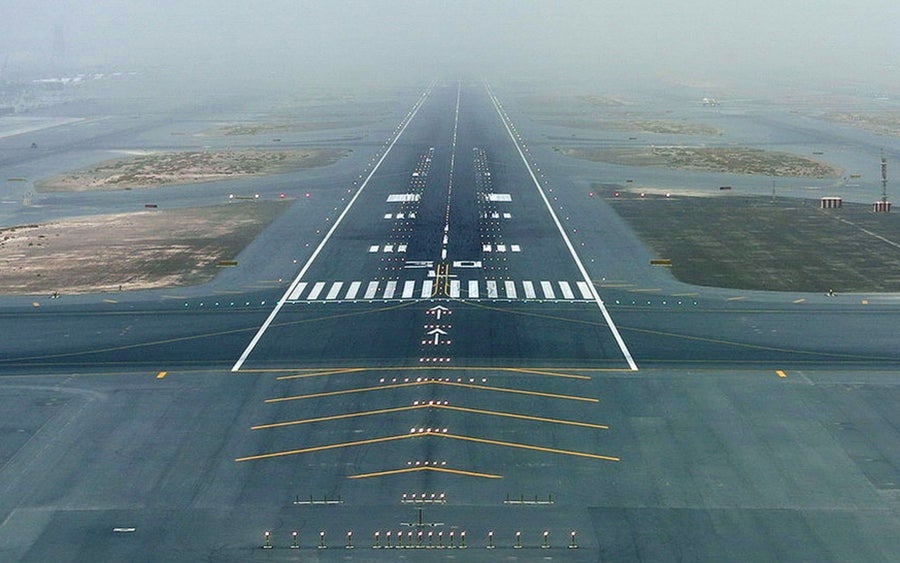
Runways come in three basic categories: visual, non-precision, and precision. Since most of us will be flying in a modern jet airliner to, we’ll take a look at the precision runway markings, since those provide the most information.
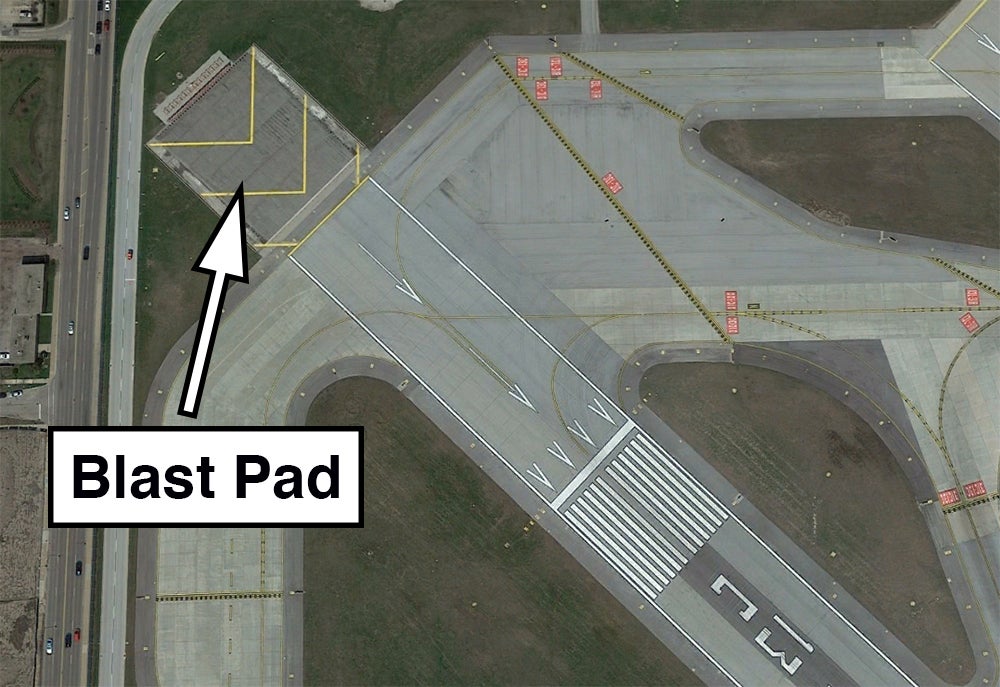
The first thing you might see is an area with yellow chevrons painted on it. This is called the blast pad , and while it sounds like you might blast off from this point, it is actually a paved area that prevents jet blast from departing from ripping up the ground. Not only would this damage the ground, it might also kick up debris that could find its way into jet engines and damage them. The pavement on the blast pad is relatively thin, so aircraft can’t use this area for landing, even in an emergency. The weight of the aircraft, and the force of the landing, would damage the concrete, as well as the undercarriage of the aircraft.

The next area you might see is a section of runway that has white arrows painted on it, leading to a thick white line. This area is known as a displaced threshold , and it is a space that can be used to extend the takeoff distance, but not for landing. Like the blast pad, the concrete in the displaced threshold is not always reinforced, so it would not withstand the pressure of a landing aircraft. If the arrows on the displaced threshold are painted white, that means it is part of the runway and may be used for takeoff. If they are yellow, then it is considered part of the taxiway and may not be used for takeoff.
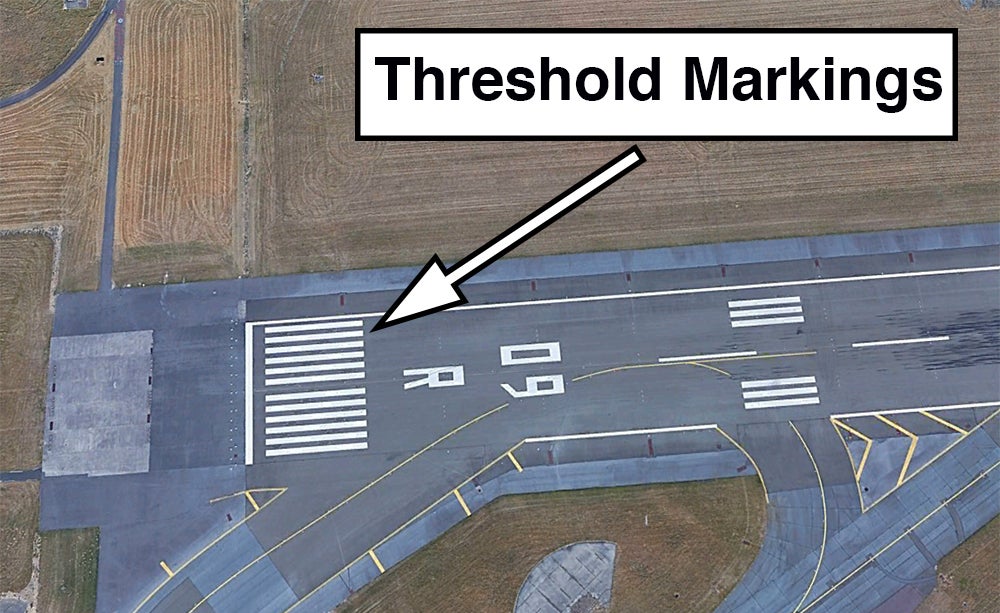
At the end of the displaced threshold (if there is one) is a heavy white line, which is the threshold itself. The threshold indicates the point of the runway after which planes may land. Just past the threshold is a series of 150-foot long parallel white lines called threshold markings . Not only do these lines give a visual cue for the beginning of the actual runway, but the number of lines will tell a pilot how wide the runway is. Four stripes will indicate a runway that is 60-feet wide, and the number of stripes increases to as many as 16, which indicate a 200-foot wide runway.
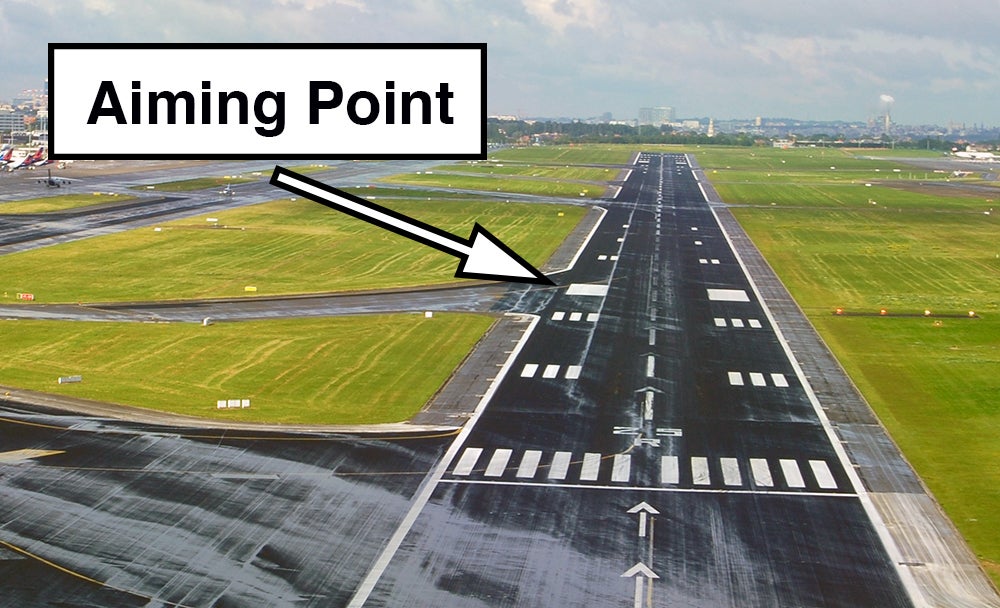
Following the the threshold markings is the runway designation number, which we discussed that last week. Set 500 feet from the runway threshold line is a series of bars that indicate the beginning of the touchdown zone , and 500 feet away from that are two large, solid rectangles called the aiming point (some European countries use three offset blocks). As the name implies, the aiming point is what the pilots aim for while landing. The aiming point is the first in a series of lines called fixed distance markers, each 500 feet apart, that help the pilot know just how long the runway is. All of the lines together, including the aiming point, are included in the touchdown zone. And, the number of lines at the beginning of the touchdown zone tell the pilot how long the runway is. For example, one line indicates a runway less than 900 meters long, while 6 lines indicate a runway that is 2,400 meters long or more.
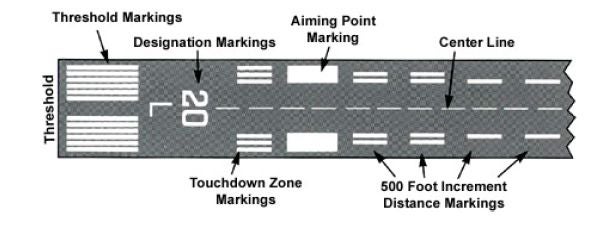
All of these markings help pilots land, but before you can land you have to take off, and before you can take off you have to taxi from the gate to the runway. In the next installment of “Did you know?” we will take a look at taxiway markings and runway lighting.
!!! UNKNOWN CONTENT TYPE !!!
Wingspan will be taking a couple of weeks off for the holidays. Look for return flights starting back up in January. Happy Holidays to all, and thanks for reading!
!!! UNKNOWN CONTENT TYPE !!!
!!! UNKNOWN CONTENT TYPE !!!
!!! UNKNOWN CONTENT TYPE !!!
!!! UNKNOWN CONTENT TYPE !!!
!!! UNKNOWN CONTENT TYPE !!!
!!! UNKNOWN CONTENT TYPE !!!
!!! UNKNOWN CONTENT TYPE !!!
If you enjoyed this post, please join in the conversation and let me know. For more posts about aviation, aviation history and aircraft oddities, head over to
Wingspan
.
!!! UNKNOWN CONTENT TYPE !!!
 "Ash78, voting early and often" (ash78)
"Ash78, voting early and often" (ash78)
12/21/2017 at 13:12, STARS: 2
Wow...cool! Having been in general aviation most of my life, these giant airport markings are mostly foreign to me. Very interesting. No amount of computerization beats a good visual cue.
 "Chan - Mid-engine with cabin fever" (superchan7)
"Chan - Mid-engine with cabin fever" (superchan7)
12/21/2017 at 13:39, STARS: 1
This was fun, thanks!
 "WilliamsSW" (williamssw)
"WilliamsSW" (williamssw)
12/21/2017 at 13:41, STARS: 2
Great stuff, as always! I would add that, generally (but not always), the reasons for a displaced threshold is because there are obstacles blocking a normal approach to the first portion of the runway - frequently trees.
Also, many blast pads (including the one pictured at KMDW 13C) are Engineered Materials Arresting Systems - specifically *designed* to trap an aircraft. So they’re really unusable except for emergency overruns.
In fact, the one you pictured, sadly, was not there when this happened: https://en.wikipedia.org/wiki/Southwest_Airlines_Flight_1248
So, what’s next? Lighting? That’s a fun one...
 "ttyymmnn" (ttyymmnn)
"ttyymmnn" (ttyymmnn)
12/21/2017 at 16:44, STARS: 1
Been out all day! Just getting to comments. Yes, I had read that about the blast pads and forgot to mention it. I will add it in, thanks. And I remember that SWA accident well.
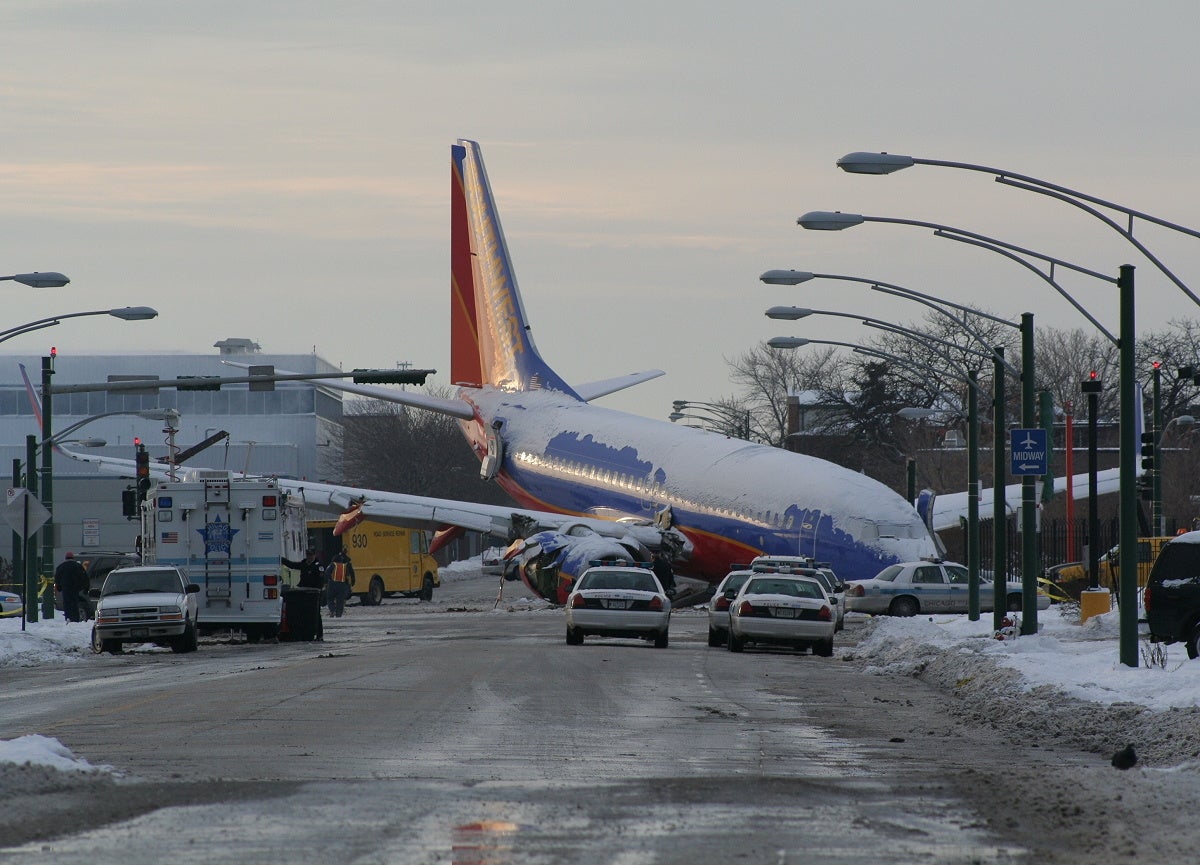
 "WilliamsSW" (williamssw)
"WilliamsSW" (williamssw)
12/21/2017 at 17:07, STARS: 1
The EMAS systems were put in place at Midway in response to that accident. That airport is tightly boxed in by streets, houses, etc and has little margin for long landings.
So sad that it took the life of a child to get those installed.